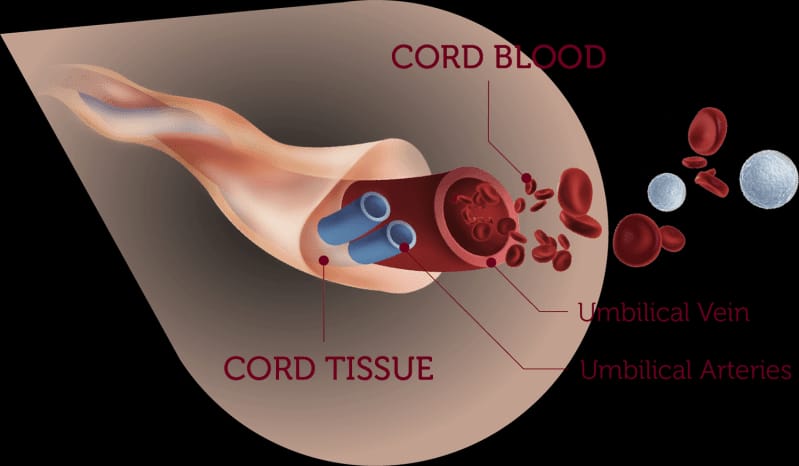Banking Your Cord Blood – We all know that blood grant saves life. But did you know that the umbilical cord and placenta have wonderful rescue qualities after a child is also born? In fact, this blood, previously cast after birth, is rich in blood cells that can be used to help more than 80 different types of disease, such as leukemia, lymphoma, and other immune disorders inherit (1). When given to a person in need, these stem cells develop into the new marrow and provide healthy blood cells of life, not only as a newborn, but a person with blood and / or immune disease.
Cord blood collection occurs after a healthy baby comes safely. The collection process begins immediately after the umbilical cord has been cut off, takes between 3-5 minutes, and is painless and safe for both birth and child. When cut, the umbilical rope is cleaned, and a healthcare professional draws the blood that puts a sterile needle into the rope (2). This blood is sent to a public or private cord blood bank, where it is tested, freeze and stored.
Banking Your Cord Blood
In most countries, parents waiting for the donation of cord blood (3): (1) Parents may choose to donate cord blood to the blood of a public cord bank without financial costs. If this option is selected, collects, carries, carries, processes, tests and stores the sample to be used alternatively to any person matching and in need. Currently more than 803, 983 frozen cord blood units are stored in more than 134 public banks about 55 countries, and more than 35,000 patients worldwide have received a cord blood transplantation through a bank of the public cord (4) . Alternatively, (2) Parents can pay a fee for a private cord blood bank to collect, process and store blood for later use by parents, family member or child. There is an estimate of 220 private cord blood banks worldwide, stored more than 5 million samples (5).
Odds Of Using Cord Blood Stored In A Family Bank
He has shown that the parent’s knowledge and knowledge of the blood grant of the cord and banks is low. In fact, a study by Velikon and his colleagues (2021) showed that only a quarter of people were aware of the blood bank, and only a few people could identify at least a cord blood bank. Many people in the study also reported that they knew a little about chord blood banks, and the minimum difference between the knowledge of professionals and non-ordered blood professionals. In their review, Peberdy and his colleagues also found that parental awareness of cord blood banks and / or low subscription. However, the information was higher when a cord blood bank was given information to people and / or subscription by their senior healthcare provider or pre-birth classes (6). This result emphasizes the importance of giving parents information about the cord and banks of the normal SEO treatment.
Knowledge and knowledge of cord blood and banks is vital as it not only allows parents to make an informed choice of cord blood storage, but also ensures the supply of potential rescue cells. Each year thousands of people are diagnosed with blood and / or immune diseases that can be treated with hematopoiitic transplant or blood stem cell (7). However, these patients may have a suitable matching range from 29% to 79% depending on their ethnic background (8).
It is difficult to find the right game. On the good, chord blood subscriptions from children of different ethnic backgrounds can help. The blood grant of the cord is fast, safe and painless for parents and children, and provides life stem cells that can help treat leukemia, lymphoma, cell anemia diseases and other life -threatening diseases. By giving the umbilical cord blood, you give hope to these patients and their families.
Courtney is a science communications officer for the donor network (fist) and is an assistant for the program “helps medical makers: support and understanding live donors”.
Future Health Biobank
In addition, Courtney is currently completing the Clinical Psychological Master Program at the University of Queensland.Cord Blood Banking is one of the most exciting medical developments in the last decade. However, since it can be quite new for most parents, there are many misconceptions about this state of the art. If you heard about the benefits of your child’s umbilical cord banks but you are not sure whether you want to do it, the following myth can help you make an informed decision!
Legend: The cord blood collection can affect the delivery and take blood away from the baby! FACT: Cord blood collection is painless, easy and safe for both mother and child.
The cord blood collection is a safe and painless procedure. Since cord blood is only collected after your child is safely delivered, and the procedure your doctor does not serve you, a significant risk to you or your child. This also does not affect both mother and baby treatment during the delivery itself.

Legend: Cord blood is rarely used in medical treatments today. FACT: Cord blood is used to treat more than 80 different diseases! –
World Cord Blood Day 2017
Cord blood stem cell transplant was used to treat more than 80 diseases including bone marrow disorder, blood cancer and autoimmune diseases.
Legend: cord blood cells can not match my family! FACT: Cord blood cells stored for families are higher potential matching!
Your child’s cord blood can be used for other family members, especially their sisters. This is because blood transplant can tolerate HLA antigen disagreement and other sources such as bone marrow and blood stem cell transplant should be perfect.
Legend: mothers with hepatitis B cannot store the blood of the cord. FACT: Hepatitis B carriers can store their children’s cords and examine them strictly as soon as they are used.
Bank Your Cord Blood For Future
Hepatitis B carriers (especially mothers) can store their children’s cords, directly for automatic use without major problems. Your child is usually vaccinated and vaccinated against the same virus. Therefore, even where the cord blood is contaminated with the virus, the immunized baby will be protected. In addition, there are now many effective drugs that can destroy the virus even if a person becomes infected.
Legend: Parents with a minor or large -massia may not store their child’s cord blood. Fact: If the child is not in danger of becoming a major -in -depth, blood can collect and store the rope.
The minor or characteristic of the massemia is usually a light blood disorder. Your life expectancy is normal and you have no more medical illness than anyone else. However, you should inform your midwifery about your carrier status during the early senior period so that filtering tests can be carried out. Children’s Hospital
By Friday 27, you may have heard your doctor talking about cord blood banks and how useful it is to deal with blood disorders. What is the blood of the cord? How does it work?
Delayed Cord Clamping & Cord Blood Banking In Singapore
The blood of the cord is blood from the umbilical rope. After separating the umbilical cord from your child, the doctor will remove the cord blood from processing, freezing and storage.
Blood stem cells (BSC) of the cord blood are used for stem cell transplant (SCT), which is important for patients with certain disorders in the blood or cancer.
The first comparison should be made to get a BSC from someone else. The chances are that high disagreement, which can make the cord blood bank more desirable. However, it is possible that a child will be able to use a BSC if they have certain blood disorders, as the genetic shape of these BSCs is damaged. Alternatively, children’s brothers and sisters may be able to use the BSc instead, as there is a higher chance of a positive family game.
The laboratory will separate the BSC from the blood of the extract rope. Chemical protection is added before the BSC is placed in large tanks filled with liquid nitrogen, at approximately -180 ° C. This facility is called a cord blood bank.
As Parents, You Will Strive To Make The Best Decisions For Your Children’s Future. One Decision That Can Have A Lasting Impact Is Cord Blood Banking—a Choice That Goes Beyond Today And Holds Immense
Consider it: a private cord blood bank works as a bank, and a public cord blood bank works as a subscription. If you open a savings account on your money in a bank, you can only access the money. Similarly, in the case of private cord blood banks, there are your child’s BSCs for personal use that another person cannot contact.
Blood bank is a public cord for everyone. For patients who need SCT but not a donor, a public cord blood bank is extremely useful because it is easier to find a perfect or partial match. However, your child will not have its own exclusive rights in the cord within a public cord blood bank.
Note that chord blood banks are a choice, but it is never mandatory. Public banks are the chance of using them
















